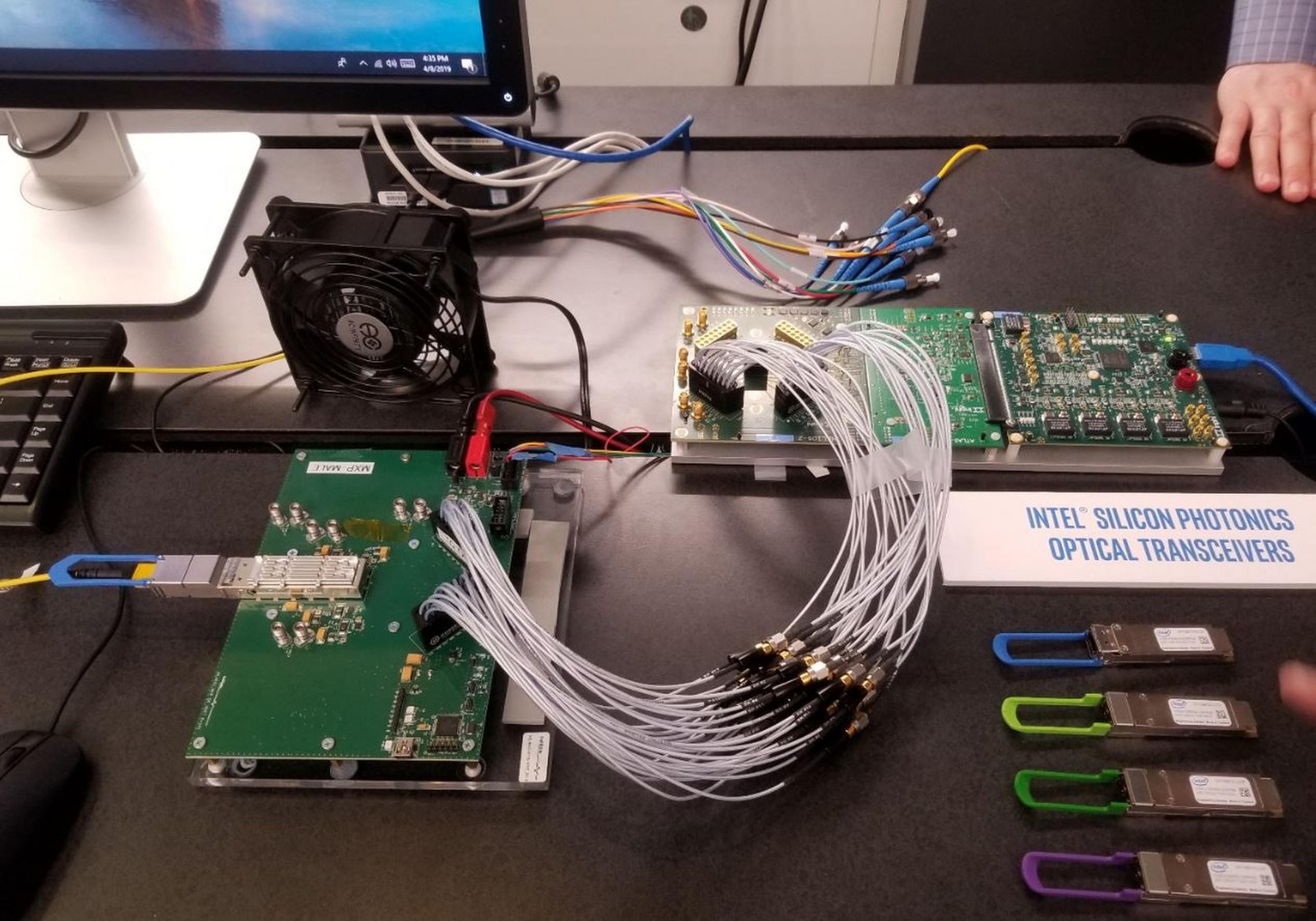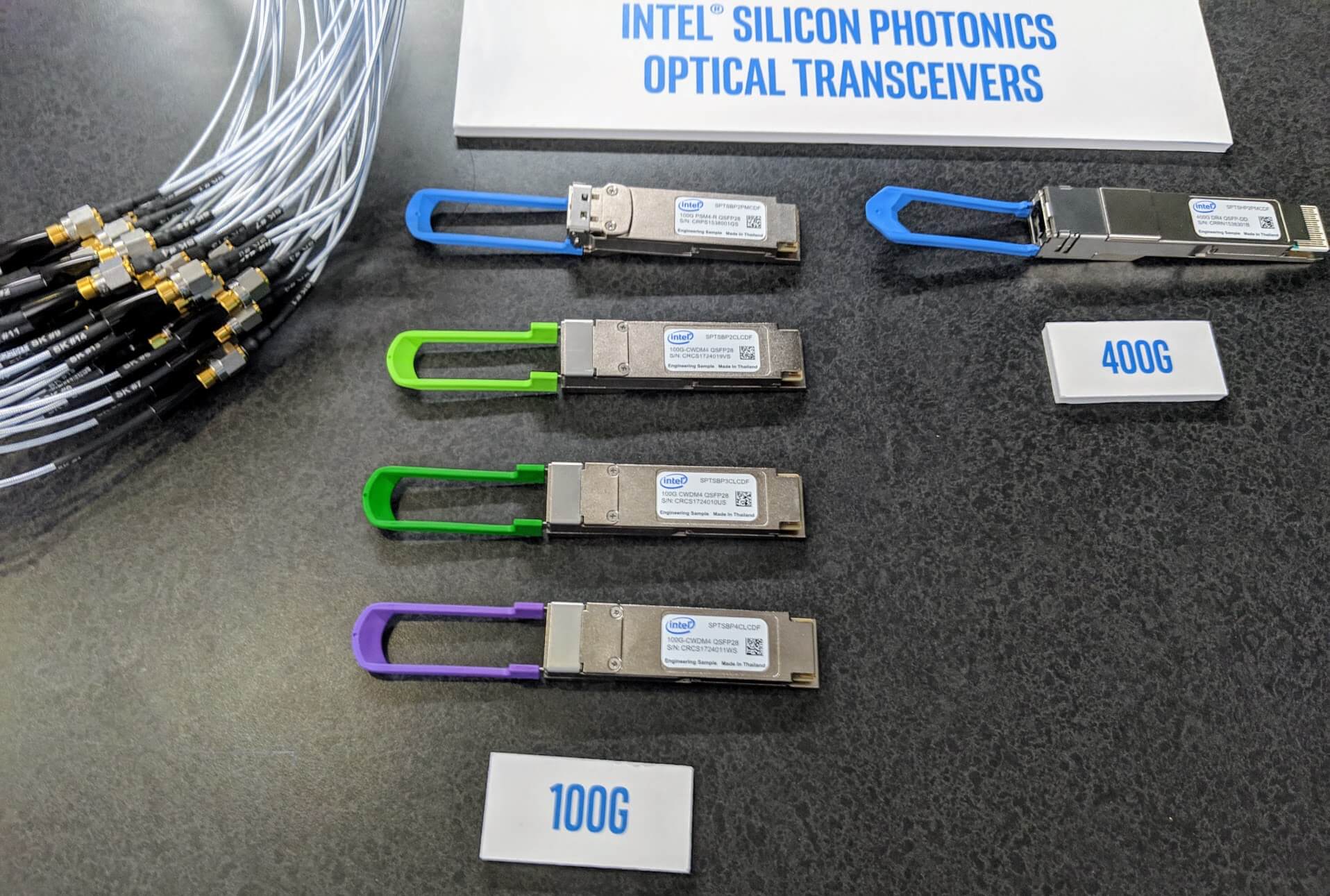Why it matters: Intel has touted the benefits of silicon photonics (mixing optical and electrical parts) for over a decade, and for good reason. It’s intuitive that a signal based on light would move faster, operate a higher density and require less power, but obviously it’s hard to sustain a signal as delicate as light. However, after reaching one million 100G optical transceivers sold per year, Intel is finally dialing up production and preparing to launch the 400G.
The Intel 100G has a maximum transfer speed of 100Gbps and comes in four varieties supporting cable lengths from 500m to 10km. At their recent Interconnect Day, Intel announced the 400G as a successor, which predictably increases transfer speeds to 400Gbps. They’ve only confirmed the 500m variant for now, though as development continues, more options are expected to be revealed.
While Intel’s demo (below) wasn’t exactly a sight to behold, the technology presented was incredible.

Image credit: Tom’s Hardware
Optical transceivers like the 400G are the translator between jacked-up fiber optic cables which contain information stored in light, and computers which require electronic signals. They beat copper cables on range and use a third of the power. They surpass other optical solutions in scalability by using the InfiniBand and OmniPath protocols designed for data centers with over 10,000 plus nodes. According to Intel though, the reason everyone’s going to be buying the 400G is because they’re much cheaper and faster than anything else on the market.
Competitors’ 100Gbps optical transceivers require up to 26 discrete components, including nine lenses and five active alignment tools, all sealed in an airtight container. Intel lowers costs by using just two components without an airtight seal and quadruples the speed by increasing efficiency.
Rather than using traditional lasers, Intel bonds a regular 24nm silicon node to Indium phosphate, and then uses the node to control how the Indium phosphate emits light, thus modulating the signal.

Image credit: Serve the Home
Intel claims that they’ve been the largest provider of silicon photonic networking hardware in the data center market for the last six quarters straight, providing a third of all hardware purchased. They plan to capitalize on that success by releasing the 400G next year and doubling the production over the 100G to two million units per year.
By: Techspot
 Toll Free: 888-88-CADAN
Toll Free: 888-88-CADAN Support
Support Client Login
Client Login
